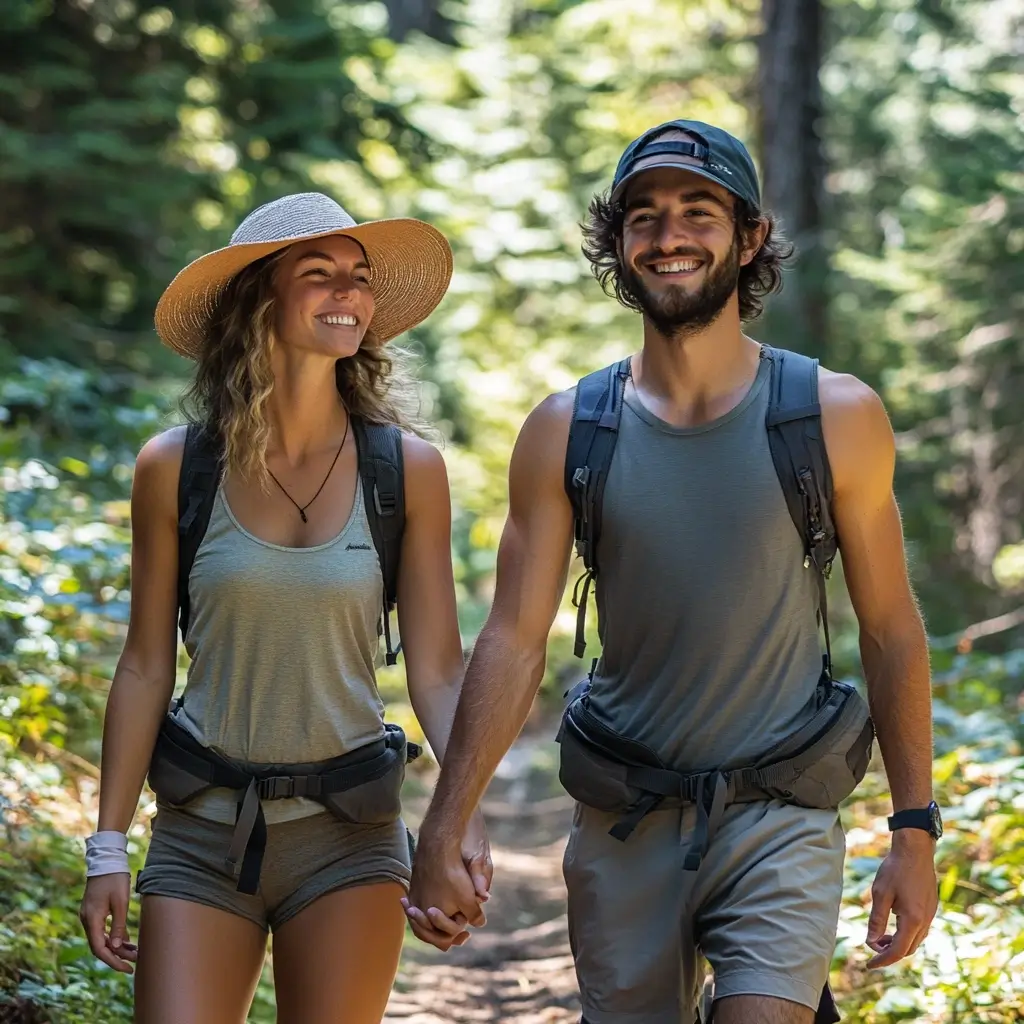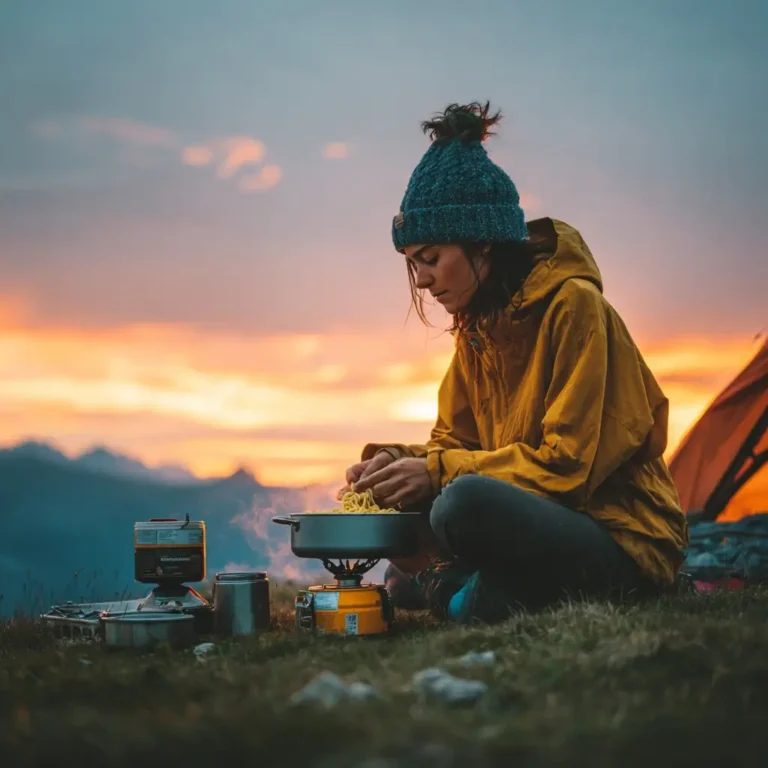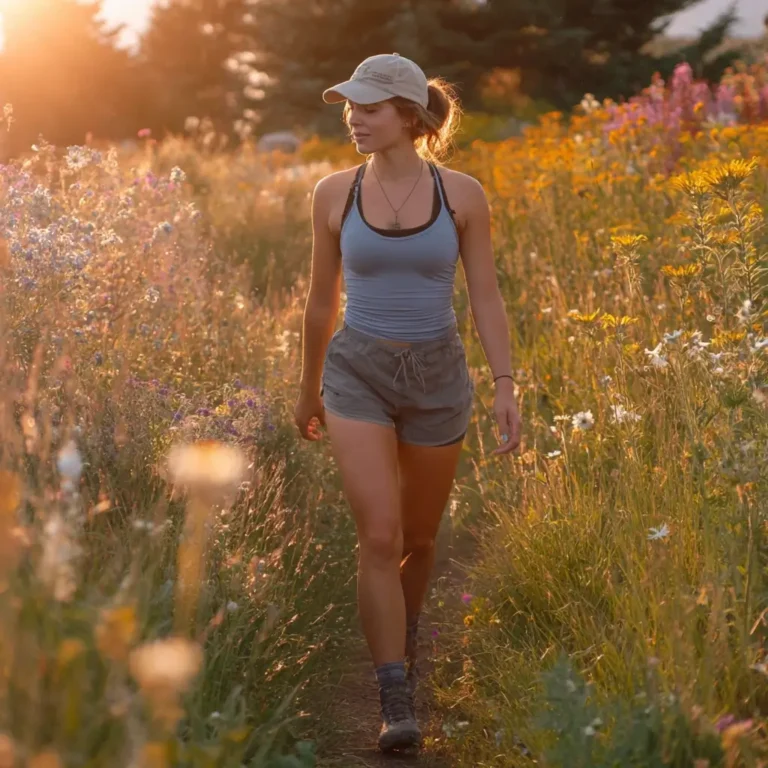1. Why Your Hiking Outfit Matters
Hiking is more than just a physical challenge—it’s a chance to reconnect with nature, find your rhythm, and feel empowered by every step. But to fully enjoy the journey, you need the right gear. That starts with a hiking outfit that keeps you cool, protected, and moving freely. A well-planned hiking outfit doesn’t just look good, it also boosts comfort, reduces fatigue, and prevents injuries.
🎒 Amazon Pick: Start with the Women’s Short Sleeve for breathable, lightweight comfort on every trail.
2. The Basics: What Makes a Great Hiking Outfit

A great hiking outfit balances function, comfort, and durability. The materials should be moisture-wicking, lightweight, and designed to move with your body. Cotton is a no-go—it traps moisture and causes chafing. Instead, opt for polyester, nylon, spandex, and merino wool. Think in layers so you can adjust to changing conditions.
Essential components include:
- A moisture-wicking base layer
- Insulating mid-layer (optional for cool weather)
- Protective outer layer
- Breathable, flexible bottoms
- Proper socks and footwear
🧢 Amazon Pick: The Long Sleeve Hiking Shirts is a trail-tested, moisture-wicking favorite for any hike.
3. Tops: Breathable Layers for Every Climate

Your hiking top should regulate your body temperature while wicking away sweat. In warm weather, go for a sleeveless or short-sleeve shirt made of quick-dry material. For cooler hikes, a long-sleeve with UPF protection or a thermal base layer is key. Always check the label for technical performance features.
Top Picks:
- Short-sleeve wicking shirts
- Long-sleeve UPF shirts
- Lightweight fleece pullovers
👚 Amazon Pick: Try the Women’s Long Sleeve UPF Shirt for comfort and sun protection.
4. Bottoms: From Trail Shorts to Zip-Off Pants

Bottoms are often underestimated in hiking. Depending on the trail and season, you may prefer shorts, leggings, or convertible pants. Shorts offer breathability and ease in warm climates, while zip-offs are ideal for changing weather. Choose a high-waisted design for support and avoid anything with bulky seams.
Bottoms to Consider:
- Hiking shorts
- Leggings (for shoulder seasons)
- Zip-off pants
- Skorts for a fun twist!
👖 Amazon Pick: The Women’s Trail Shorts are lightweight and trail-approved.
5. Footwear: Finding the Perfect Pair

Your feet do all the work—so support them! Choose hiking footwear based on terrain, season, and hike length. For rocky trails, go with boots. For well-groomed paths, trail runners may suffice. Don’t forget proper hiking socks to reduce friction and wick moisture.
Top Footwear Options:
- Hiking boots (for rugged terrain)
- Trail running shoes (lightweight, breathable)
- Hiking sandals (for water hikes)
🥾 Amazon Pick: The Merrell Moab 3 Hiking Shoe combines ventilation with stability.
6. Weather-Ready Layering Techniques

Weather can shift quickly on the trail. That’s why layering is critical. The classic 3-layer system ensures you’re ready for anything:
- Base Layer: Moisture-wicking (polyester, merino wool)
- Mid Layer: Insulating (fleece or puffy jacket)
- Outer Layer: Windproof/waterproof shell
This approach lets you adapt easily without overheating or freezing.
🧥 Amazon Pick: The Watertight Rain Jacket is lightweight, packable, and perfect for trail emergencies.
7. Hiking Accessories That Complete the Look

Accessories aren’t just stylish—they’re essential. The right extras elevate your experience by boosting comfort and utility. Our go-to accessories include:
- Hats for sun protection
- Sunglasses with UV filters
- Bandanas or buffs for cooling and sweat control
- Hydration packs or water bottles
- Lightweight gloves (for early morning or altitude hikes)
🧢 Amazon Pick: The Wide-Brim Hat is cute and functional for sunny trails.
8. Seasonal Tips: Outfits for Every Season
Spring:
Expect mud and changing weather. Waterproof outerwear and versatile layers are key.
Summer:
Go for breathable clothing, lighter colors, and minimal layering. UPF shirts and hydration packs are essential.
Fall:
Fleece layers and convertible pants rule. Look out for falling temps and slippery leaves.
Winter:
Insulated gear, base layers, thermal gloves, and waterproof boots are non-negotiable.
9. Building the Best Hiking Outfit

We’ve tested countless combinations of shirts, pants, boots, and accessories over hundreds of trail miles. One summer in Arizona, a breathable tank and skort combo with a wide-brim hat saved us from overheating and sunburn. In contrast, a spring trek in the Pacific Northwest called for a smart mix of a fleece pullover and waterproof shell.
We learned the hard way what happens when you wear cotton socks (hello, blisters!) and why layering is your best friend. Over time, we’ve found that comfort and confidence start with how you dress—and a few trusted Amazon staples make all the difference.
10. Our Experience with Hiking Outfit

We’ve logged hundreds of miles on trails across deserts, mountains, forests, and coastlines—and one thing we’ve learned is that the right hiking outfit can truly make or break your experience. On one early spring hike in Colorado, we learned the hard way that layering is everything. The morning started cold, warmed up dramatically by noon, and ended with a chilly wind. Those of us who layered correctly with a moisture-wicking base, fleece mid-layer, and windproof shell stayed cozy and happy the whole way. Those in cotton hoodies and jeans? Not so much.
On the flip side, one of our favorite moments was during a warm summer hike in the Pacific Northwest. We wore quick-dry tanks, stretch shorts, and colorful buffs—comfortable, stylish, and selfie-ready. It felt amazing to explore in outfits that moved with us, kept us cool, and looked as good at the summit as they did on Instagram. Finding your ideal hiking outfit takes a little trial and error, but once you get it right, your confidence and comfort on the trail skyrocket. Trust us, it’s worth the effort.
11. Our Tips for Hiking Outfit
- Layer Smart: Always think in layers—base, mid, and outer—for max versatility.
- Ditch the Cotton: Choose moisture-wicking fabrics like merino wool or polyester.
- Comfort First: Avoid anything too tight or too loose—chafing and discomfort are real on long hikes.
- Footwear Matters: Invest in quality hiking boots or trail shoes with proper support.
- UPF Protection: Look for shirts and hats with built-in sun protection.
- Pack Rain Gear: Even on sunny days, a packable rain jacket can save your trip.
- Wear Good Socks: Merino or synthetic hiking socks prevent blisters and regulate temperature.
- Check the Weather: Your outfit should match the forecast and elevation.
- Use Accessories: Hats, buffs, and sunglasses enhance both comfort and safety.
- Test Before the Trail: Always wear your full outfit on a short walk before your big hike.
FAQ – Hiking Outfit
What is the best outfit for hiking?
The best hiking outfit combines comfort, functionality, and weather-appropriateness. Choose a moisture-wicking top, breathable bottoms (like hiking pants or shorts), sturdy footwear, and weather-appropriate layers. Add accessories like a sun hat, sunglasses, and a hydration pack for a fully trail-ready look.
What is the 3 layer rule for hiking?
The 3-layer rule involves a base layer to wick moisture (like a synthetic or merino wool shirt), a mid-layer for insulation (such as a fleece), and an outer layer for wind and water protection (like a shell jacket). This system keeps you dry, warm, and adaptable in changing weather conditions.
Should I wear leggings or pants for hiking?
Both are great options—it depends on the trail and the weather. Leggings are stretchy, lightweight, and great for warm or mild hikes, while hiking pants offer more durability, sun protection, and weather resistance. Choose what makes you feel comfortable and confident!

If you enjoyed this blog post about the topic hiking outfit, don’t forget to leave us a comment below and share your favorite trail look or must-have gear!
If you’re interested in camping tips, you might also enjoy our article on Quick & Easy Camping Meals for Every Camper.





